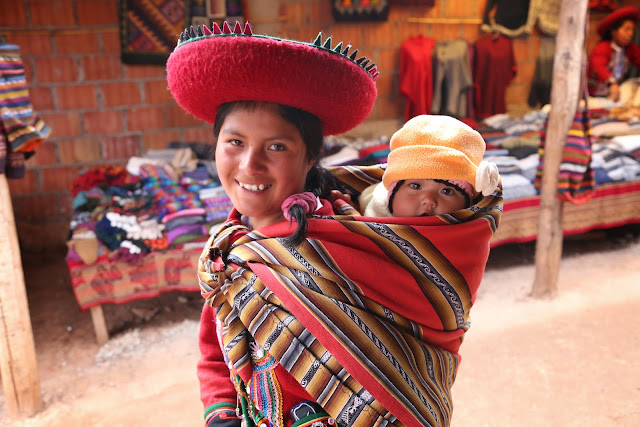There are
very few city vistas in the world as incredibly breathtaking as that of Cusco.
It seems that the first inhabitants teamed up with God to build their town in
harmony with the creation of the Andes. You never forget about the world´s
longest mountain chain; you are reminded of it walking up steep streets and
staircases that would make San Francisco jealous. The roads are somewhat unique
in and of themselves: you won´t find any pavement, but you will find stray dogs
that patrol those quiet roads, hardly wide enough for a single Prius.
Comedically, many of those very narrow roads are labeled as “two-way,” creating
the occasional stalemate for drivers. At least I can be a safe spectator on the
sidewalk, if you can call it that. Having to dodge those rearview side mirrors
by hiding in quaint, mom-and-pop shops always keeps you on your toes.
The locals
are proud of their Incan heritage, as they should be, given that the city was
the capital of the Incan Empire in the 15th and 16th
centuries. Most fascinating to me is the local dress, specifically the
womens´outfits. They wear hats that look like a mix between what would be found
in Lincoln´s closet and on the heads Thanksgiving pilgrims. They carry their
children – and their groceries – in colorful blankets that remind me of
kangaroo pouches, but on their backs. Oh, and the hair – always black, and
always in two ponytails.
Most
tourists to this southeast Peruvian city are simply making the required transit
to see Machu Picchu, an archeological world wonder that can inspire even the
most veteran explorers. The site is only accessibly by a 3.5 hour train ride to
Aguas Calientes, which sits at the foot of the mountain. But because of the
extreme altitude, some travelers (as in my case), decide to spend a few
tranquil days in Cusco to better acclimate before starting the final leg of their
journey.
The
altitude of Cusco is a very real concern to every visitor of every age, unless
you call Mount Everest your hometown. The city sits at about 11,000 feet, which
is about 11,000 feet higher than Havana and Singapore, where I have lived for
the past two years. The air feels thinner, and that becomes clear when you´re
out of breath after only climbing a single flight of stairs. My hostel sits
mid-way up a hill overlooking the city, and every traveler comes back to their
rooms as obnoxious mouth-breathers. After three days, I started to feel more
adjusted, but I still collapse on my bed every time I come back from a walk
around the lively city square. Thank goodness Machu Picchu is only set at 8,000
feet.
To help
with the altitude, the locals swear by a local tea called mate de coca, even though any resemblance to the Argentine yerba mate is in name only. It is
prepared by adding raw coca leaves, native to South America, to a cup of
steaming water. It is supposed to be sweet, and often accompanies breakfast or
afternoon conversation.
The only problem is that it is illegal in the United
States, and it will make you test positive on a urinalysis for cocaine. This is
a real issue for anyone in the no-second-chances on the drug policy of the US
military. From the one medical journal I read, it isn´t addicting, and it
doesn´t get you high. Cocaine as a drug is prepared through unnatural scientific
processes, which uses unusually high concentrations of extractions from the
same coca leaves that are mixed as tea, which only requires a couple leaves.
The fact that it is illegal in my home country kind of comes as a shock: reputable
hotel chains, major grocery stores, and tourist restaurants sell the stuff and
advertise it as if it were Lipton. I could be wrong, but I imagine popping on a
drug test for cocaine after having coca tea is kind of like popping for opium
after having a muffin. I decided to play it safe and stick to my water and
orange juice. I also had Starbucks.

















No comments:
Post a Comment